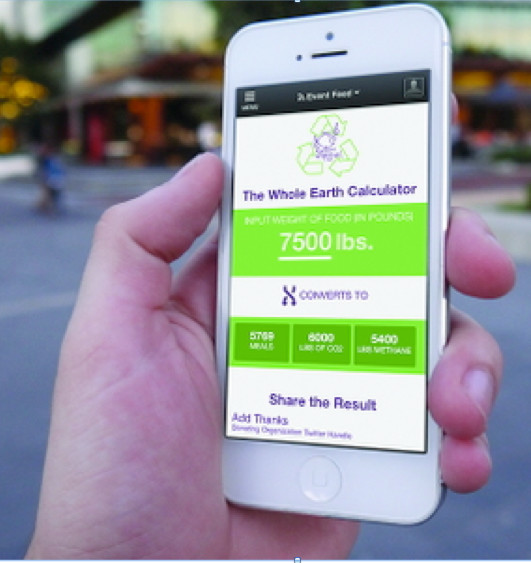Feeding a need to reduce greenhouse gas
Rock and Wrap It Up!updates Whole Earth curriculum
Understanding the concept of climate change may be difficult, but seeing how much unused food is recovered from a sporting event or a rock concert and then feeding several hundred people and computing how much greenhouse gas was not released into the atmosphere is much more tangible.
That is the aim of the Whole Earth Calculator and its associated curriculum, which is now being updated by Cedarhurst-based Rock and Wrap It Up! to include a climate literacy component.
Founded nearly 26 years ago by Cedarhurst resident Syd Mandelbaum, Rock and Wrap It Up! (RWU) began collecting unused food from several Five Towns stores and then expanded the collection to arenas and stadiums. Since 1987, approximately 700,000 pounds of food has been collected. Using the Whole Earth Calculator app that translates to 535,000 meals and a reduction of 531,000 pounds of greenhouse gas being produced, according to Mandelbaum. There is also a component that calculates the impact of unused plastic and paper on greenhouse gas emissions.
“In July 2014 the White House helped us launch the Whole Earth Calculator as it fit into what they were looking to do, which is sensitize people about climate change and what could do that more than a cool mobile app,” Mandelbaum said.
As part of speaking with Dr. Laura E. Pete recently, the assistant director for Climate Adaptation and Ecosystems for the president, the new climate literacy component and updated Whole Earth curriculum will dovetail with the new Global Climate Agreement that was signed by 195 countries, including the U.S. to put the world on track to avert dangerous climate change and limit global warming. The agreement takes effect in 2020.
Several Lawrence teachers were enlisted to test pilot versions of the lessons in grades through 12. Adjustments were made. The lessons included interactive and hands-on learning such as having students get out of their chairs and walk around, eating a meal, being denied food or cleaning up as sanitation workers. The importance of food recovery and the uses of the Whole Earth Calculator are highlighted as methods to help those in need as well as the planet.
Sullivan and another educator, Dr. David Friedman, an environmental science teacher at MacArthur High School in Levittown, are collaborating on revising the curriculum to highlight the impact of food loss on the environment.
“[Rock and Wrap It Up!] allows students and others to make a change and contribute to fighting hunger and poverty,” said Friedman, who initially got involved with RWU when a MacArthur student established a snack donation program about five years ago. [RWU] opens eyes to real issues that need to be fixed. The curriculum will help teachers have their students become more aware of the nexus of climate change and poverty.”
Along with districts on Long Island such as Hewlett and Lawrence , more than 45 schools in North Carolina and Tennessee conduct food recovery using the RWU model. The rock band Aerosmith was the organization’s first endorser of the Whole Earth Calculator curriculum as well as being one of the first musical acts to donate the unused food from their concerts. “It’s all about individuals helping in their communities,” Mandelbaum said.






